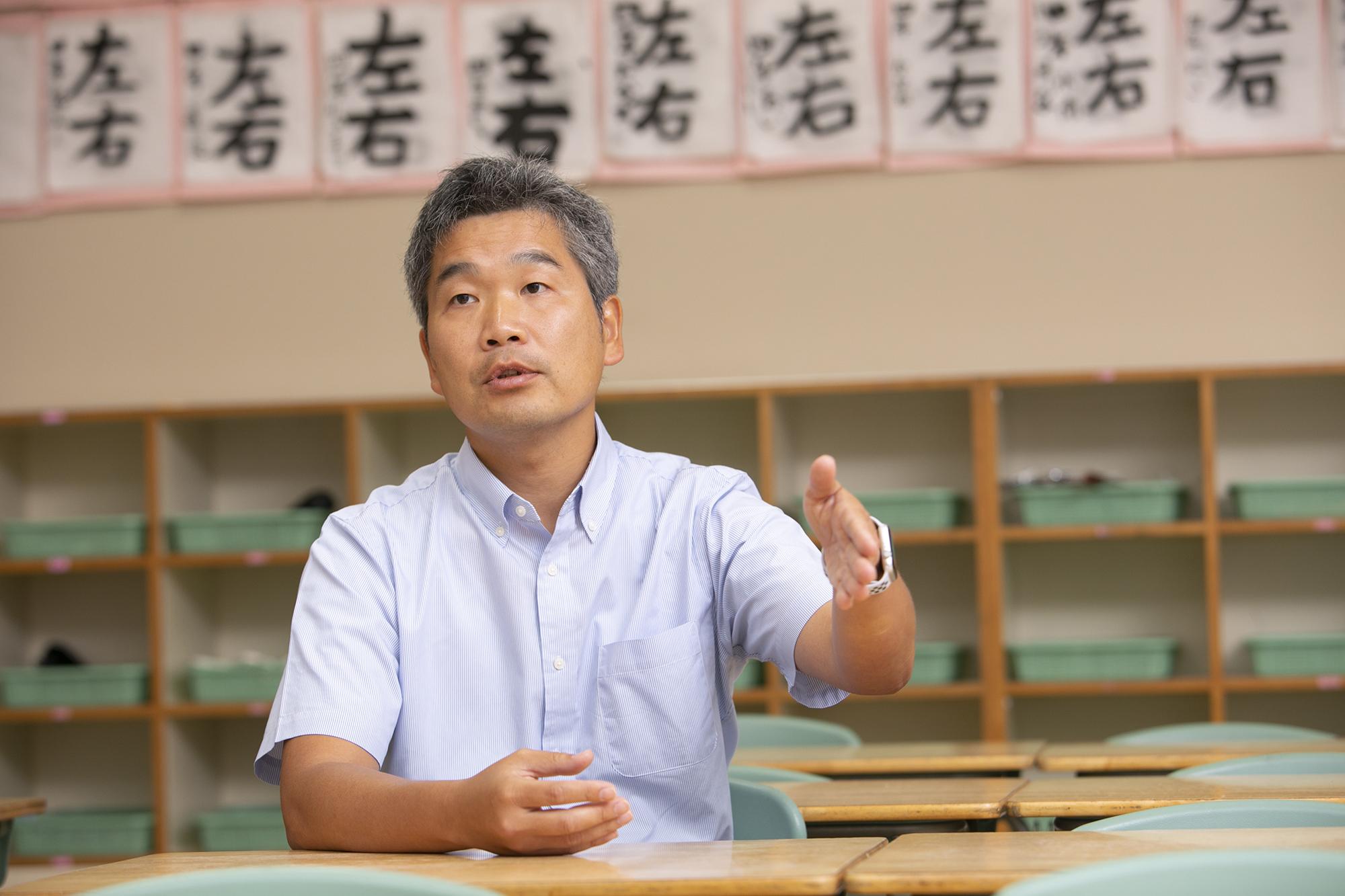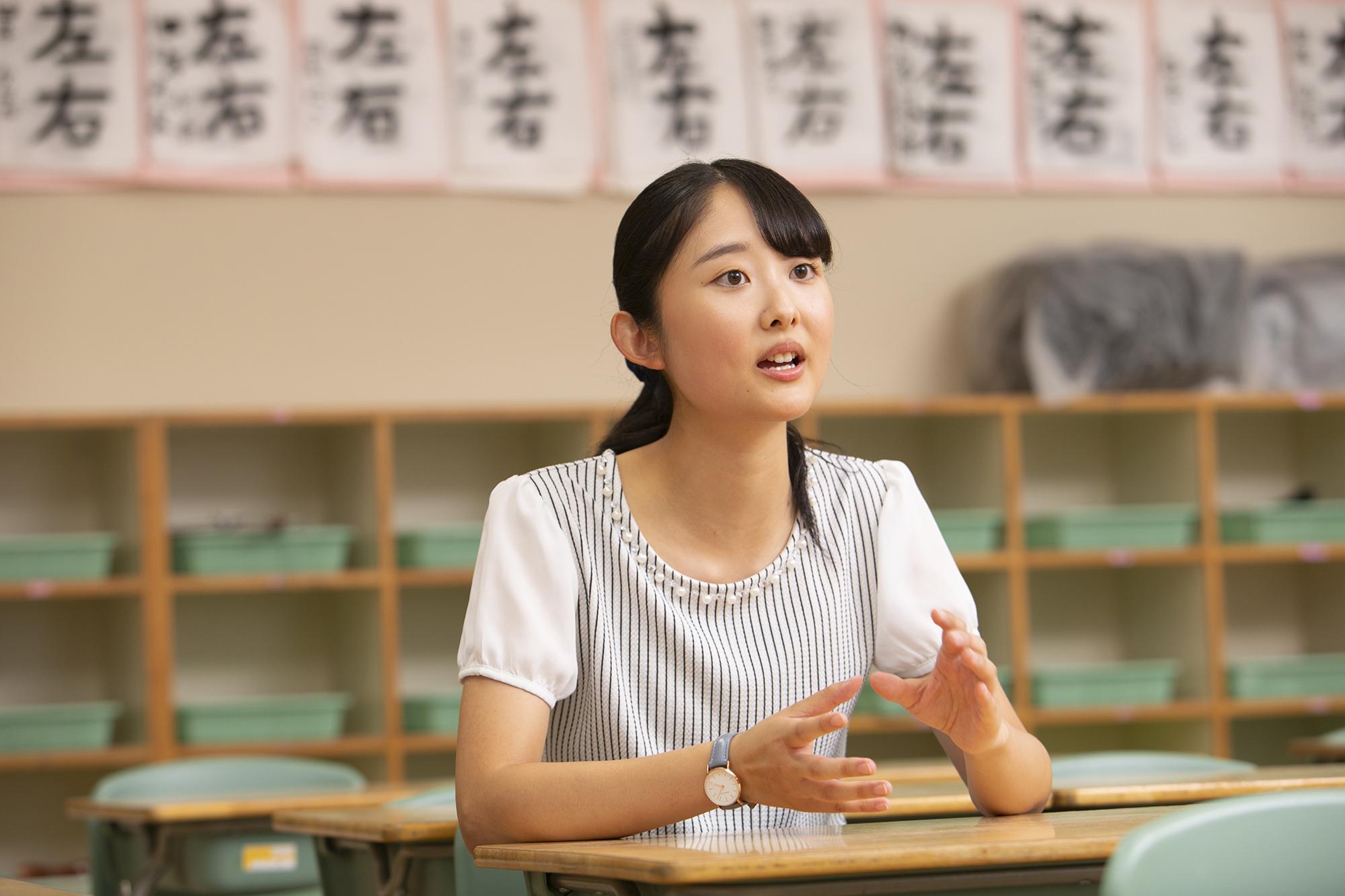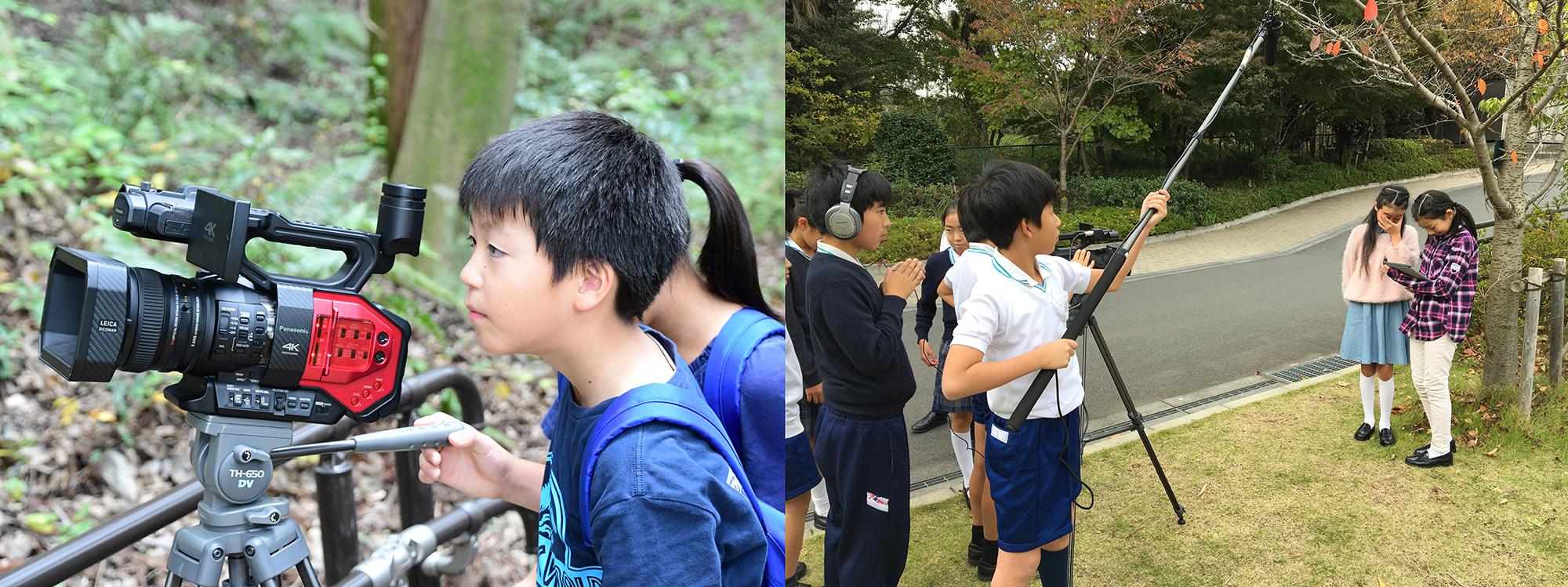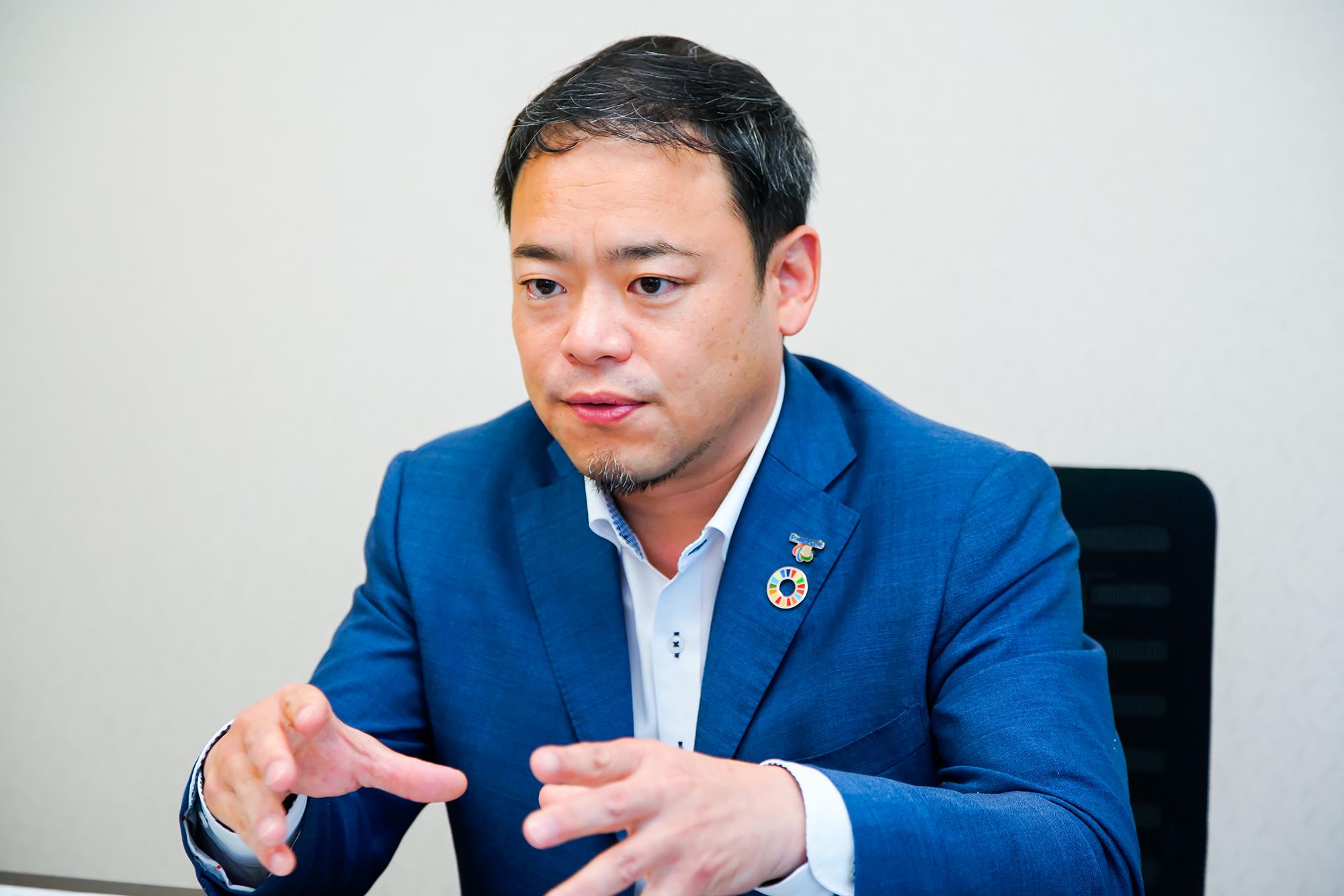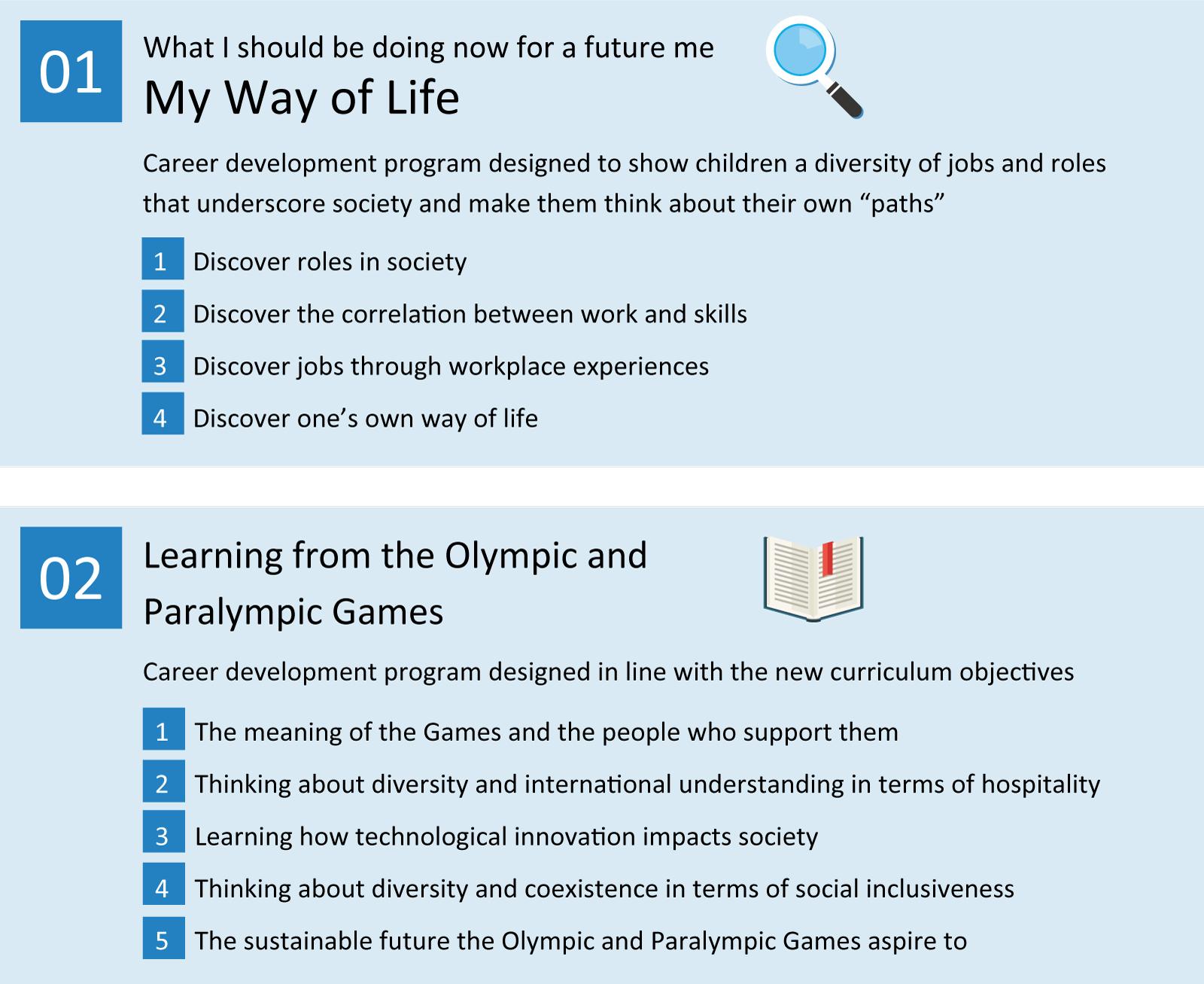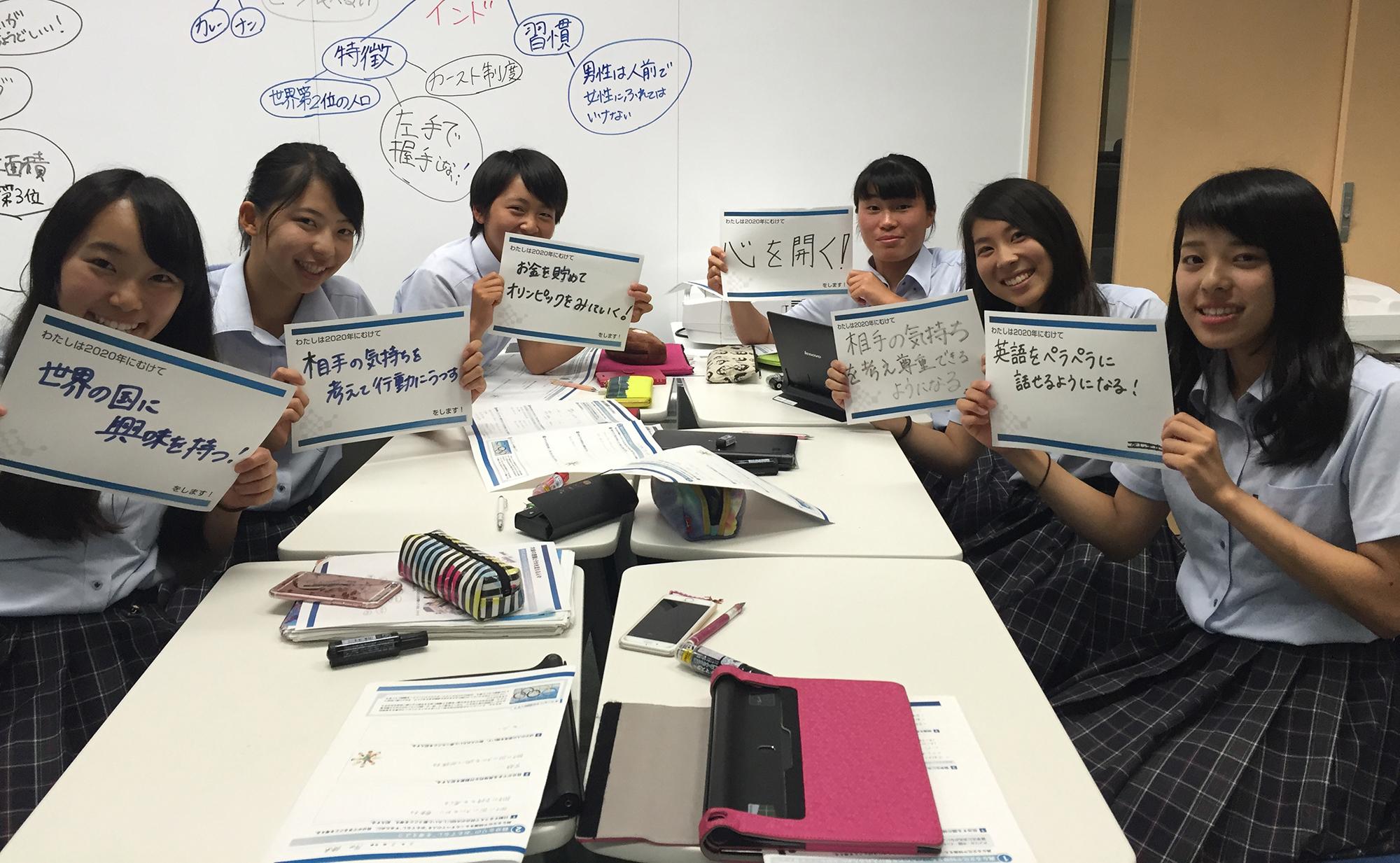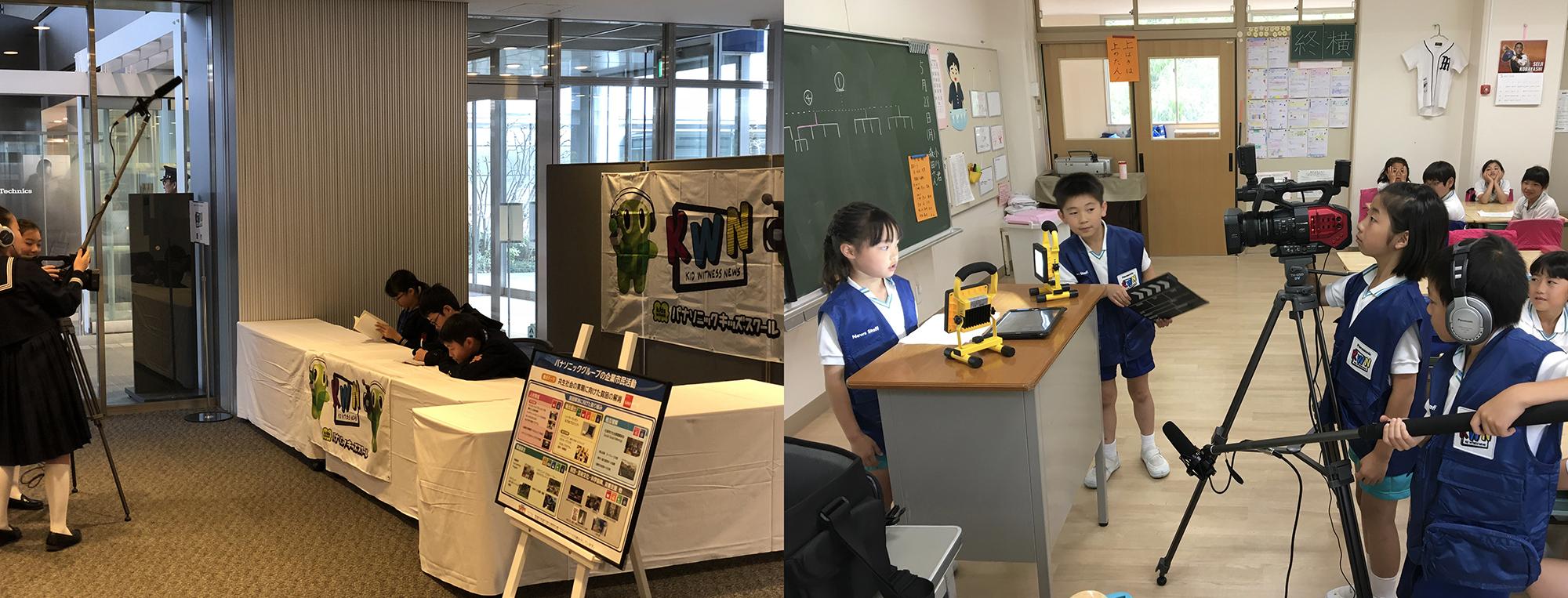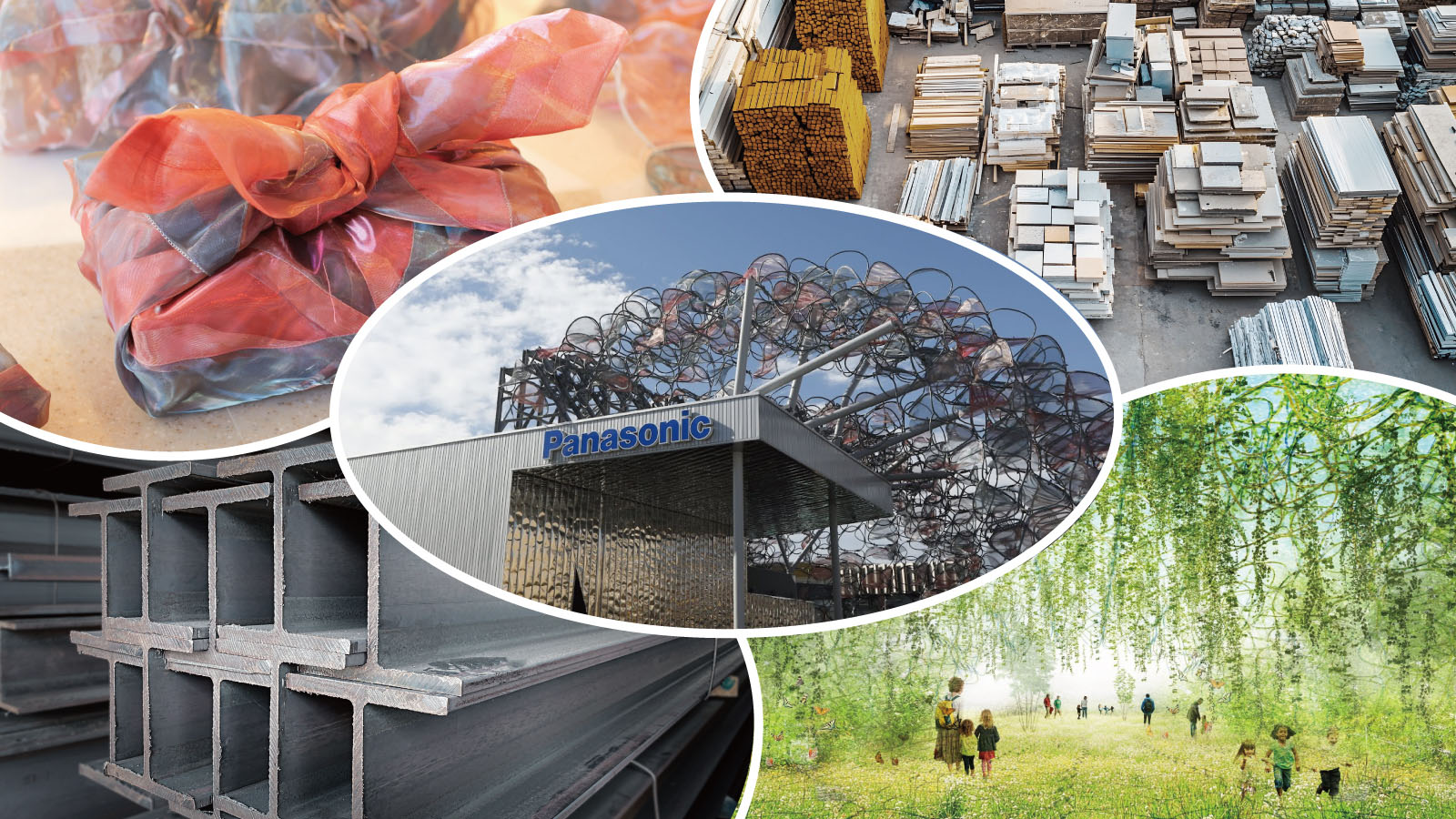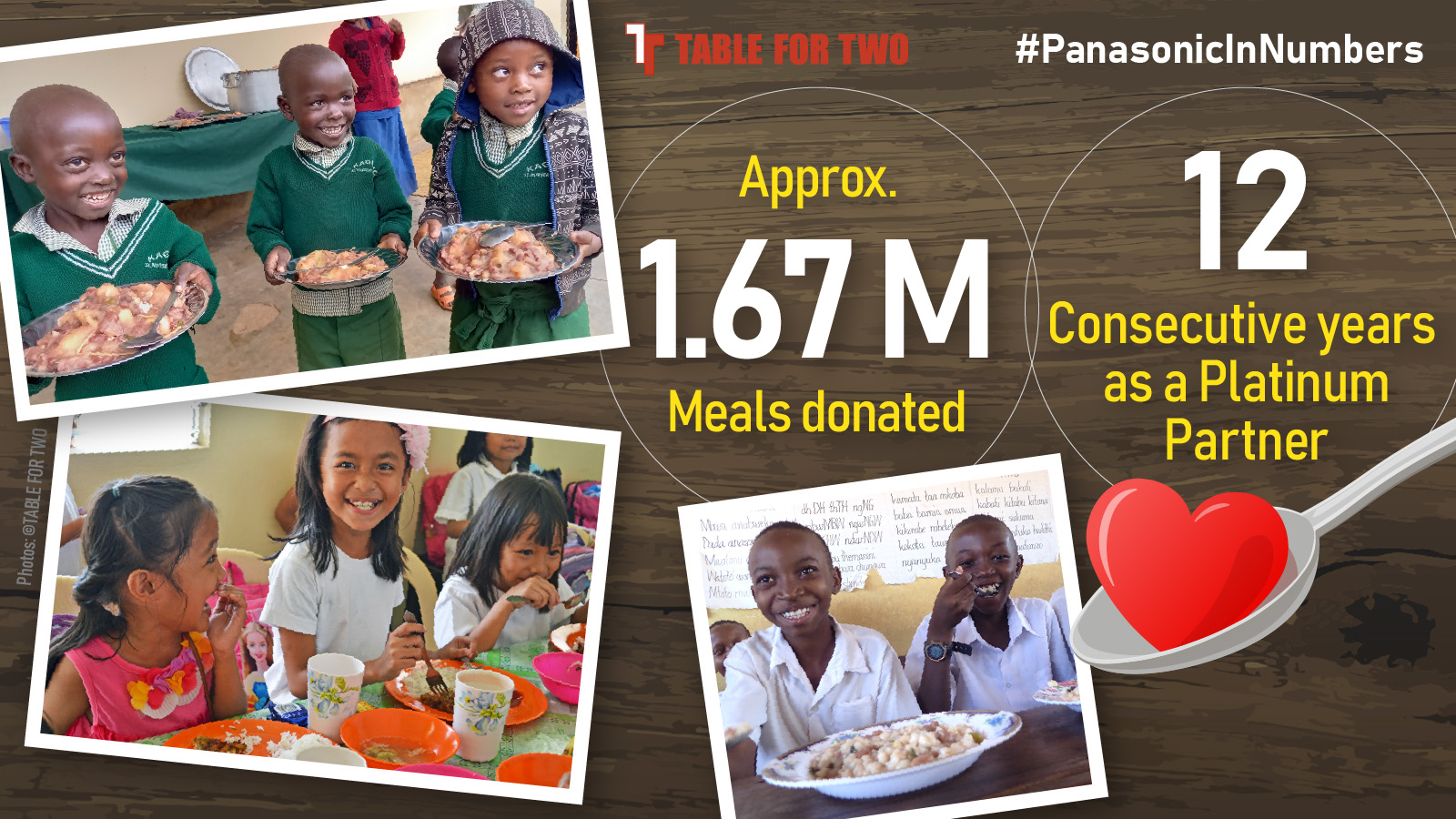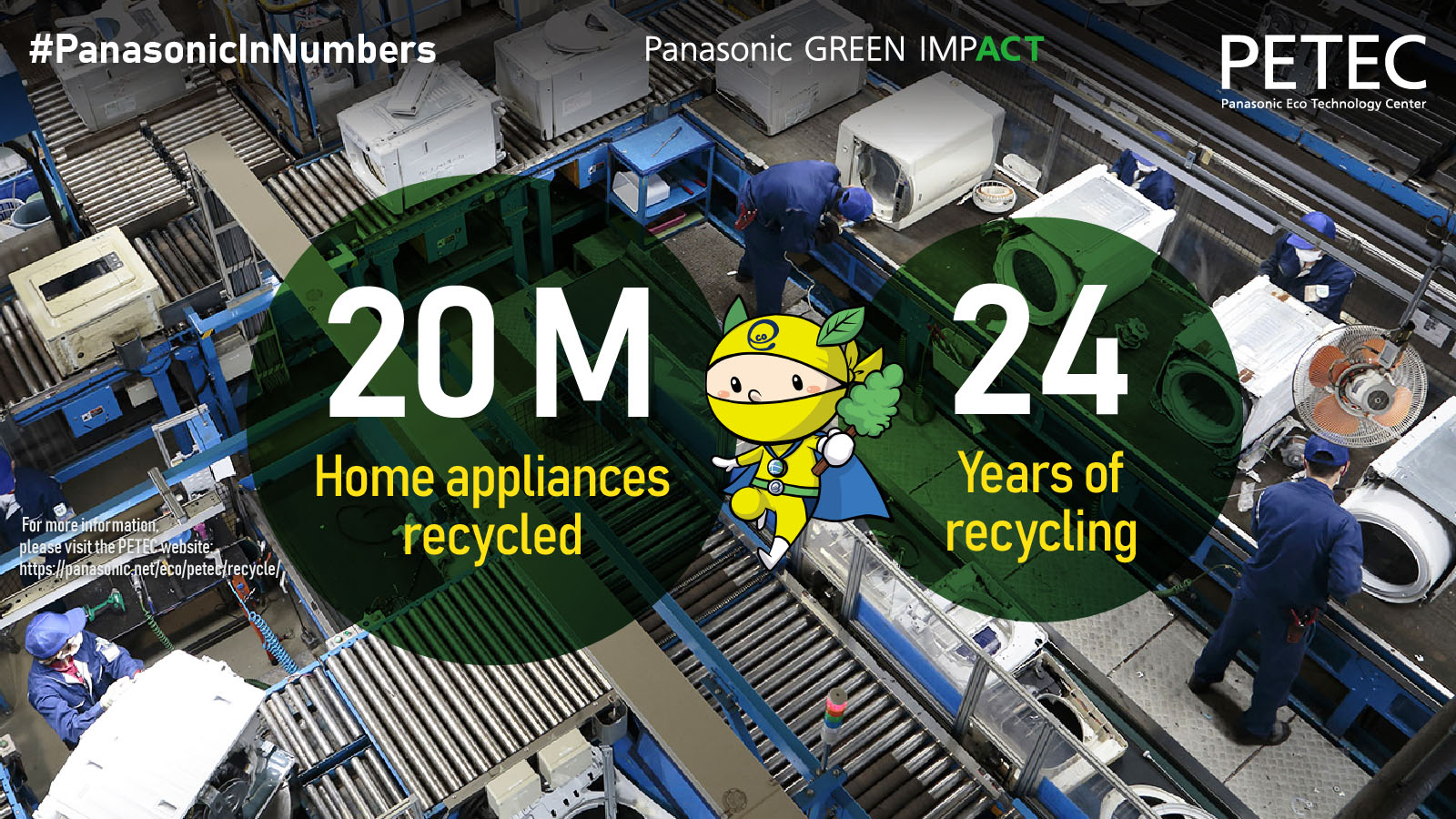
How and where children learn nowadays have changed so much alongside the growing diversity and global reach of information today. In Japan, for example, schools are not viewed as the sole sources of education as they are strongly encouraged to work with a wide range of outside groups and individuals to solve social issues and get them involved in educative activities. So, what should be done in this day and age to help children pursue and fulfill their dreams and potential? This article introduces what Morimura Gakuen has been doing about that through its years of participation in the "Kid Witness News (KWN)" program that Panasonic has been promoting for 30 years as its "support for learning."
Summary
- In Japan, the 2020 academic year marks the long-awaited start to a new school curriculum that is raising the bar on competency by forging a "zest for life."
- Panasonic started Kid Witness News in 1989 to help children develop a mindset for thinking and acting on their own, through the process of making videos.
- This article introduces the benefits of this productive activity as seen by Morimura Gakuen who has been partaking in Panasonic's project for many years.
Children today need the "zest for life"
In Japan, the 2020 academic year marks the long-awaited start to a new school curriculum. As is obvious from its slogan "Teaching the zest for life as preparation for what lies ahead," Japan's Ministry of Education, Culture, Sports, Science and Technology (MEXT) is raising the bar on competency by going outside the traditional framework of academic learning.
Behind the move lie the changes in the social fabric that are besieging the country at an unprecedented speed. In a hyper-information-driven society where not only smartphones but also cars and home appliances connect to the internet, being info-literate to a degree that one can agilely pick, choose and delete his/her way through the overwhelming amount of information out there will be an essential skill going forward. It will also be important to have a borderless mindset to go with the unstoppable waves of globalization.
Point in focus, with Japan, you find a country stuck in a demographic quagmire of a rapidly aging population and falling birthrate with a broken pension program and its time-honored practice of lifelong employment with the same company gone to the way side. In other words, today's children will have to survive in a world where the accepted norms that the country has long taken for granted will no longer be. This is where the "zest for life" comes into play.
Started in the USA by Panasonic in 1989, "Kid Witness News (KWN)" is an education support program that puts children in contact with the world around them. For 30 years now, Panasonic has been offering the program to elementary, junior high and high school students as an opportunity for them to plan and make videos by themselves with the objectives of enhancing their creativity and communication skills, and brewing teamwork. It has all the trappings of a forerunner initiative to the next-generation education program being pushed on the national level.
Japan first took part in KWN in 2003. The program continues to expand around the world with a global film contest held every year since 2008 and other activities. Just for the 2019 contest, works involving 3,800 children from 12 countries and regions were entered by 315 schools.
This article recounts the benefits of this meaningful activity as told by representatives from Morimura Gakuen, which has participated in the program since 2010, and KWN at Panasonic. Morimura Elementary School won the "Best Teamwork Award" in the primary school category at the KWN Global Contest 2019.
Valuable programs for learning the abc's of life and spurring spontaneity
Morimura Gakuen was founded in Takanawa, Tokyo in 1910 by Ichizaemon Morimura, a businessman of Japan's Meiji Era. The campus was moved to Nagatsuta, Yokohama (Kanagawa Prefecture) in 1980 where providing a lush-green environment for its pre-, elementary, junior high and high schools. The vast grounds are in fact 1.8x the size of the Tokyo Dome.
Founded as an "independent and self-managed" school, Morimura Gakuen focuses on developing "individuals who can make their own way in life and serve society and the world." As elementary school teacher Noboru Enomoto explained, "Lessons and studies are planned so that the students can convey their thoughts and ideas to others. With KWN as well, the ideas basically come from the students."
Even before the school started taking part in KWN in 2010, the students were doing video projects with a compact video camera from an "expressive" viewpoint. But, as Mr. Enomoto pointed out, "With those projects, everything was over and done with after the students watched the videos, while, with KWN, there are third-person opinions and instruction from movie-making professionals. The works that the students make with their own two hands get put out in the world and objectively critiqued. That was a major reason for us to participate in the program."
The school's 2019 award-winning "Shiro and the Furoshiki" talks about the problem of plastic pollution in the ocean from the perspective of a blue whale named Shiro (quaintly taken from the Japanese word for blue whale, shironagasukujira). As an effective way to cut back on using plastic bags, the children in the video propose to a concerned Shiro using a wrapping cloth known as a furoshiki. Besides replacing plastic bags to carry all sorts of things, the video explains how the furoshiki proves useful in disaster situations, is environment-friendly since it can be used over and over again, and can even be worn as a yukata, showing that there is no limit to how it can be used. It ends with the message "To give Japan a bright future. And for the ocean that gives us so much." It beautifully portrays the straightforwardness of children and, yet, is so well done that it is hard to believe that it was made by a bunch of 3rd graders. It glues the viewer to his/her seat for the roughly 5 minutes.
Looking back, Kasumi Fuwa, the teacher who supervised the project, said, "I wanted to teach the children about the furoshiki so that they would learn about the good things in Japan." Some time after that, when she and the students were discussing current problems in Japan in search of a theme for their video, the children came up with the story about sea creatures being endangered by marine pollution. She added, "Then, I proposed combining the two themes into the project and everyone agreed."
They allotted the entire second semester - about 4 months - to making the video. The students divided up into cameramen, directors, actors and editors and set out on the project with each team adamant about their job. Because they were kids, one might imagine them requiring a compact video camera, but Panasonic lent them a big heavy commercial-grade camera with 4K recording resolution. The editing equipment was also specialized for video imagery. Moreover, an expert in video production was dispatched to the school to lecture about creating storyboards, writing scripts and other things that helped set the ball in motion.
Ms. Fuwa recounted, "As the project evolved, the kids behind the camera started asserting things they liked and the kids directing the action started editing the script until, before you knew it, it began looking like a professional movie set. I instructed them on how to do things when necessary, but otherwise the kids did it all."
"The kids also impressed me for how they edited the segments they had shot in different places into the final video. It seems like the message that the kids were trying to convey in their video becomes clearer to them each time they watch it."
A class taught by Mr. Enomoto some time ago also won an award. He described the benefits of the KWN program that came from that experience as follows.
"Things clearly changed for the better. The kids began manifesting a mindset that they could take charge of everything by themselves not only in our integrated learning programs but also in art, PE, class affairs and all sorts of ways and places. That told me that this program was worth it."
"Mind you that, during the actual production process, I'm hands-off as much as possible. If the kids forget to bring the camera on location or if the battery isn't charged, it is important to remind them of their responsibilities, so I might ask, 'Who's job is it?' or 'Who will take care of it?' 'Making choices' and 'being self-reliant' are essential qualities these kids will need when they get older, no matter what job they do. So, I see this activity as the perfect opportunity for the kids to learn the basics that everyone needs to survive in this world."
Panasonic's support for integrated learning stemming from its founder Konosuke Matsushita
When asked what his impression was of the Global Contest 2019, Haruhisa Okuda, Panasonic's person in charge of learning support, which includes KWN, gave the following answer.
"What the kids taking part in this contest are doing is getting very high level. The teachers are of course getting better at what they do, but when it comes to grasping the topic and their approach, the kids are putting adults to shame and their technical skills have reached a discrete level. That, I believe, is why their power of expression is so high."
Halhisa Okuda, Chief of Learning Support Group, CSR & Planning Promotion Section, CSR & Citizenship Department, Brand Communications Division, Panasonic Corporation
In the KWN program, workshops are held for schools that newly want to participate. A heavy emphasis is placed on autonomy, as worksheets for devising schedules, themes and focal points of filming are handed out for the children to complete.
Mr. Okuda pointed out, "With elementary schools, a key point is for the children themselves to find the themes. Put simply, we want them to delve into their questions of "why this or that" and produce a message of that. When I was talking with the kids from Morimura Gakuen, I could tell how much fun they were having making the video, which was great to see. With junior high and high schools, we take it a step further and look for, if we can, them proposing solutions to problems and expressing a deeper message."
Parallel to KWN, the Learning Support Group that Mr. Okuda belongs to conducts "My Way of Life" and "Learning from the Olympic and Paralympic Games" educative programs. Intended to help children build images of what it is like to work, the former involves the school teachers using the four educational tools, as well as Panasonic employees going to schools to conduct classes. The latter provides teachers with image resources that Panasonic has as a Worldwide Partner of the Olympic and Paralympic Games, which they then freely arrange into lessons on themes of the children's interests. Both are envisioned as career development programs that are intended to raise the students' competency in line with the objectives of the new curriculum.
Mr. Okuda explained, "The 'My Way of Life' program is mainly for junior high schools. It shows students the roles that people play within an organization and society, and the skills and mindset they need to do their jobs. It helps the children to more easily picture the future and see the connections between what they are studying now at school and a future job, because employees visit schools to talk about their experiences by backcasting from a little way ahead."
The "Learning from the Olympic and Paralympic Games" program uses imagery as an active learning tool. As Mr. Okuda explained, "We ran a similar program during the Rio 2016 Games at schools in Rio de Janeiro and San Paolo, but then adapted that program to fit the new curriculum. It involves giving the students worksheets and showing them images on the pretext of getting them to talk and share their opinions about them."
Thought-provoking tools are incorporated into active learning so that students learn on their own and in a group
Panasonic's support for learning stems from founder Konosuke Matsushita's belief that a company is a public entity of society. Guided by that principle, the company got seriously into social contribution activities as early as 1969. Support for learning has been one such area of activity where Panasonic has continuously focused corporate efforts at developing human resources to shoulder the next generation.
Mr. Okuda elaborated, "The fundamental purpose of the KWN, 'My Way of Life' and 'Learning from the Olympic and Paralympic Games' programs is to develop a "zest for life" in children. With them, our wishes are that these children pioneer a new world with their own strengths and grow into human resources who will contribute to the realization on the 2030 goals espoused in SDGs (Sustainable Development Goals) and a better world there beyond. For that reason, we think of it as our mission to provide support in various ways going forward."
A new current theme of KWN is "Our message -Something we want to say now (about SDGs)-". What are SDGs in the "eyes of kid-journalists"? Morimura Gakuen has already taken that up and the kids' interest in SDGs is growing, as Ms. Fuwa noted. Mr. Enomoto added, "It seems to me that the kids like jumping on things that are unknown to them. They get a kick out of discovering the world!" For sure, what they learn here should prove to be an invaluable asset when they join the workforce.
Children at Morimura Gakuen working on their project. During the 4-month-long project, the atmosphere of a professional production studio sets in
- Reproduced from the website "Mirai-kotohajime," by courtesy of Nikkei Business Publications, Inc.
# # #
- Disclaimer:
- We would like to note that Panasonic Newsroom is not a place to address personal Customer Service issues. Even though this is not the forum, Panasonic is always eager to resolve your concerns. Our local customer services contacts can be found at Global Support or you can see our list of Social Media Accounts to find the right channel for your queries and concerns.




